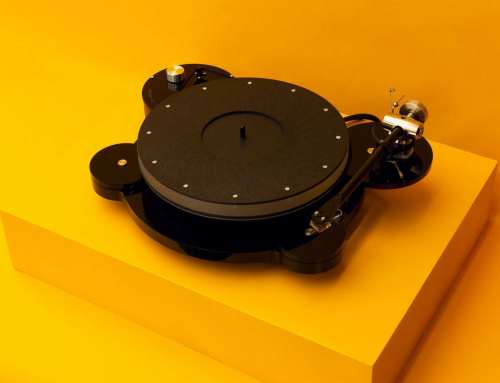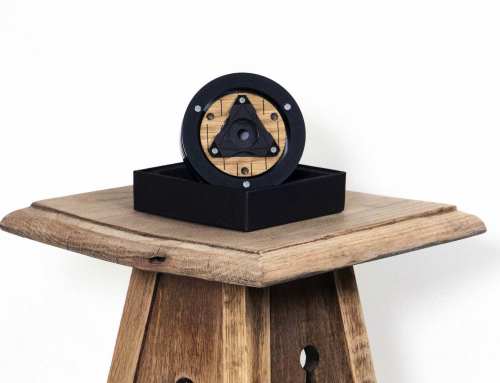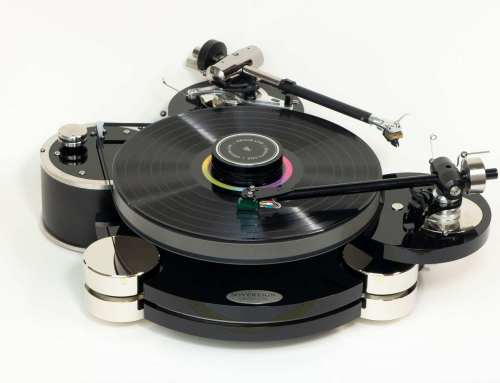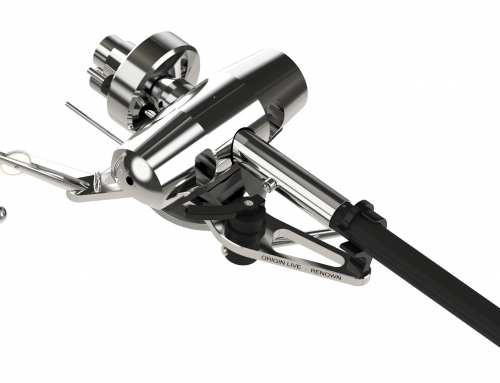BLOG POST
Why Volume Matters
Sound Quality
Part 1
Comparison Tests: How They Work and How to Get Them Right
You may not think volume to be the most exciting subject to read about. However an incomplete knowledge of this aspect has led to countless errors in judgement. It is one explanation for people who say “I can’t hear any difference” when auditioning a product. Conversely there are those who hear differences but make flawed choices due to volume related issues.
In conducting auditions with our clients it is unsurprising that we encounter many different preferred listening levels. Some cannot play at loud volumes due to being in a flat or semi-detached house with neighbours nearby. Others have no such constraints.
The inference here is that most of the time you get used to listening to your equipment at a certain volume, and this has more effect on your equipment choices and perceptions than you may think.
Comparison Tests
When you’re deciding what Hi-Fi equipment you’re going to add to your system, it’s likely that you’ll want to audition, and compare different pieces of equipment.
My first experience of this process showed me how easy it is to get comparison tests wrong but also proved to be a huge learning experience:
Comparing Differences & Evaluation of Small Changes
When you’re deciding what Hi-Fi equipment you’re going to add to your system, it’s likely that you’ll want to audition, and even compare different pieces of equipment.
My first experience of this process showed me how easy it is to get comparison tests wrong but also proved to be a huge learning experience:
Over 30 years ago as a young Hi Fi enthusiast I was bitten by the Hi Fi bug and wished to upgrade my speakers. I had a nice pair of Acoustic Research speakers at the time and spotted a pair of 2nd hand kit speakers advertised in the local paper. These promised outstanding sound at an amazingly low price. I was invited to try these with the option to return them within 2 days for a refund.
I duly compared both speakers and preferred the kit speakers but there was something niggling at the back of my mind that I may not be making the right decision. I noticed that the kit speakers were ever so slightly louder than the A&Rs. Being a novice at the time I had not compensated for the fact that the kit speakers in question were slightly more efficient, therefore played a bit louder. After all, I thought, why should this make a difference anyway?
Out of curiosity, I made sure that I listened to both speakers at exactly the same volume by adjusting the volume between comparisons. This time my preference was reversed and the A&Rs came out best.
When you compare 2 products with slight differences in sound quality, the volume level must be absolutely the same if you are to avoid errors in judgement (unless you use the trick referred to later on).
How Comparison Tests work
If you are auditioning 2 products, and the volume levels are peaking at less than 90dB, you won’t be able to notice some potentially big problems. Our ears always tend to prefer anything that sounds ‘louder’ until the volume is peaking around 90dB (unweighted). In a product A vs product B demonstration it is much harder to judge the sound quality when one product is being played at a lower volume than another. Sometimes dealers play their favoured product at a slightly higher volume to steer clients towards what they want them to choose.
It is also of primary importance to realize that resonance and artifacts in equipment increase loudness. If this is not realized it can easily lead to errors of judgement. For example a vinyl record resonates as it is played – this adds to the volume of the music ever so slightly. If you eliminate some of this resonance by the addition of a record weight, the volume will be reduced ever so slightly and IF you are playing at lowish volume you will think the sound is worse because at these levels the ear says “louder is better”.
One problem of conducting listening tests at lower levels is that it’s almost impossible to match volumes between listening tests because they are so slight.
How To Compare
90dB is the great equaliser. This is the solution which ultimately eliminates the ear’s bias towards a louder sound. Try to carry out comparisons at much louder levels (peaking at around 90dB) for short periods of up to 30 seconds on the same portion of a music track. At these levels the ear is getting all the information it needs and is no longer craving “louder”.
There are a number of observations related to listening at louder levels:
- Firstly you can detect differences much more easily and hear things you simply do not notice at lower listening levels.
- In audition, the differences between products can be perceived as massive at higher listening levels.
- Conversely at extremely low volumes, even a transistor radio can sound similar to a high end system.
If you listen at lowish volume, you might be tempted to ask yourself ‘if you can only hear small differences at high volume levels, does it really matter?”. I would suggest that it does matter because many small differences eventually add up to a significant improvement which is clearly audible at lower volumes.
Conclusions
- The seriousness of misjudgements due to volume differences are hard to appreciate and often not recognised.
- In comparing relatively small sonic differences, volume is critical. If it’s not approaching the 90dB region you will naturally prefer the slightly louder sound because of the ear’s bias.
- Louder sound can easily be due to excessive resonance, artifacts, distortion and other nasties hence you can be misled. Once the volume is peaking at around 90db these are more likely to present themselves as problems in comparison with a clean system.
- If you could adjust volumes to be absolutely identical between comparisons, then resonance would have no advantage and you would judge differences correctly. However because the ear is so sensitive, the volume change necessary is so small that this idea is unrealistic.
- For reliable comparison tests listen to the same short passage of music for short periods of around 30 seconds with the sound level peaking instantaneously at around 90dB.
Part 2
Why Volume Matters: Time, Tone and Metering
The Equipment You Chooses Depends on Volume
Loss of Sensitivity at High Volumes
Listening to music at high volumes for too long can also be a big problem. If you listen to music at over 85dB for over 2 hours, it’s likely that your ears will lose their sensitivity to treble. When you’re making a comparison between equipment it’s very important that you’re aware of this phenomenon, or you may end up choosing equipment based on a bright overstated treble.
I became aware of this problem 30 years ago when I would spend up to 4 hours in listening tests to develop products. The next morning I would listen to the changes I had made and wonder how I could have ever tolerated such a bright overpowered treble. This effect can be a contributing factor in overly bright designs where those involved are unaware of the subtleties of subjective listening tests.
This loss of sensitivity should only be temporary providing your listening levels are within health and safety guidelines. If you compare equipment in audition, whether alone or with others, it often helps to listen to a short portion of music at loud levels for periods of around 30 seconds, and keep the duration of your listening to a maximum of 2 hours.
Measuring Decibels
For as little as £12.50 you can buy a sound level meter to help you assess the volume of your system. More expensive meters will be more accurate with more definition given through fast/slow time weighted readings. The time weighted facility is worth having as it gives you a better idea of the instantaneous volume levels that you’re hearing, rather than an average (weighted) volume over time.
There are free sound level metering apps that you can download on your mobile phone. These apps are best avoided. They are often very inaccurate, and can vary ±10dB or worse from a correct reading. If an app was specifically designed for your particular phone’s microphone or if you could calibrate it using a decent sound level meter to within 1.5dB then it can function well for most purposes.
If you are unfamiliar with the way the dB scale works then all you really need to know is that volume doubles for every additional 6dB. For example a 12dB increase represents 4 times the original volume.
Once you can measure decibels properly, you can compare equipment more easily. This should eliminate the basic preference that the ear has towards the louder sound.
Your Equipment Choices can Depend on Volume
It may be surprising, but the volume you listen to music at is likely to affect your choice of speakers. If you tend to listen to your system at a low volume your ideal speaker choice will almost certainly be different than if you listened at significantly louder levels. Generally speaking, small speakers tend to produce greater clarity and speed than their larger rivals. As you increase the volume however, this advantage disappears. At higher volumes the smaller speaker cones encounter breakup and neither can they move enough air to produce proper bass dynamics at higher volumes.
Most reviewers, dealers and manufacturers will tell you that there is an ideal playing volume for most speakers. This is true. The ideal playing volume will be higher or lower depending on the design of the speaker. Take time to find out what this volume is to listen to the speaker at its best.
Tonal Balance Changes With Volume
Because of the way that the ear works, our perception of tonal balance changes with volume. When you listen to music at a low volume, there is less bass relative to midband and treble. However as you increase the volume, the ear notices the bass becoming proportionally louder and more prominent relative to other frequencies.
Some amplifiers have a “bass boost” button you can use to compensate for bass loss at low volume listening. This is a worthwhile idea but the implementation is tricky due to different loudspeaker efficiencies, so most amplifiers ignore it.
Conclusions
- Use an accurate sound level meter and avoid mobile phone apps unless calibrated.
- Be aware that your ears experience a loss of treble sensitivity in an extended period of loud listening levels.
- There is an ideal volume for every speaker to sound it’s best.
- Your perception of correct tonal balance changes with volume.
Lastly look after your ears – there are guidelines published on how to avoid hearing loss. Government health and safety guidelines are a good place to start. Always bear in mind that the “fast / slow “ setting on your sound meter makes a lot of difference to your readings.



